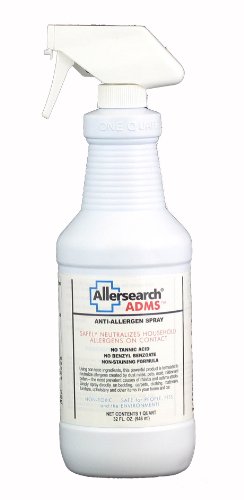Dust mites are everywhere. They are true survivors, able to make it in virtually all climates and at any altitude. They thrive, however, in our homes, especially bedrooms, enjoying the humidity generated by all the breathing, perspiring, and drooling we do at night and feeding on all the skin flakes we produce. For these tiny creatures, we’re living, breathing humidifier-refrigerator-landlords who charge extremely competitive rates. Why wouldn’t they infest us?
In the last couple weeks we’ve taken a look at sleep posture, how to improve it, and modern bedding. Today we’ll take a closer look at your mattress, investigating what may be lurking inside and what you can do about it.
In “Toward a Comparable Developmental Ecology of Human Sleep,” Carol Worthman presents a potential motivation for the relative “minimization of bedding” among hunter-gatherers, apart from logistical, technological, or climatic limitations: the avoidance of allergenic dust mites and other parasitic bed-mates. All that cloying, billowing fluffiness we like to ensconce ourselves in provides room (and even board) to vast numbers of dimunitive, multi-legged squatters. Our bedding, you might say, can play host to a host of parasites, especially if you live as many traditional hunter-gatherers live (and lived) – in close, often direct contact with the natural environment. Worthman mentions an increase in asthma rates immediately following the introduction of Western-style blankets to the highland tribes of Papua New Guinea, presumably caused by the hordes of dust mites finding new purchase in the blankets.
 DeMite Laundry Additiv...
Buy New $19.75 ($1.65 / load)
(as of 09:35 UTC - Details)
DeMite Laundry Additiv...
Buy New $19.75 ($1.65 / load)
(as of 09:35 UTC - Details)
Dust mite detritus is highly allergenic to humans. It can trigger asthma in people, and common side effects of exposure to dust mite allergens include itchiness, red or watering eyes, eczema flare-ups, runny nose, and clogging of the lungs. These are your basic, garden-variety allergenic symptoms, but they’re no less annoying or frustrating. They can drive a person up a wall and really hamper quality of life; I for one know that when it comes to itchy eyes, nose, or throat, I turn into a huge complainer. Maybe it’s because colds, sniffles, and allergies are relatively rare since embarking on this Primal journey, and maybe I’ve simply grown soft and unable to deal with what most folks think are inevitable, “just deal with it” ailments, but either way, they’re no fun. No one should have to deal with this stuff. Many of us do, though, because we enjoy the creature comforts of modern living. Now, before you toss out your mattresses, burn your bedding and renounce your Tempurpedic, there are other ways to deal with dust mites.
 Allersearch ADMS Anti-...
Buy New $24.95 ($24.95 / bottle)
(as of 07:40 UTC - Details)
Allersearch ADMS Anti-...
Buy New $24.95 ($24.95 / bottle)
(as of 07:40 UTC - Details)
Dealing with Detritus
It’s not the actual dust mite that bugs us (yes, pun intended); it’s the allergenic refuse that it creates. Experts suggest around 18% to 30% of Americans are sensitive to dust mite detritus, so habitual cleaning/removal of the offensive material should help us avoid the allergenic reactions. A few companies offer either intensive ultraviolet-C light treatment or high-powered steam treatment to kill the mites, followed by a vigorous vacuuming to remove the dead mites and their waste material. Although corroborating research is scant, it seems plausbile that ultraviolet light and high-powered steaming would kill a large amount of near-microscopic arachnids.
And vacuums certainly work. In fact, weekly, thorough vacuuming of your house is pretty effective at removing dust mite droppings, and it can even take care of the mites themselves. Do the carpet, the drapes, the furniture, and textiles, all of which can house mites, making sure to dust everything beforehand (consider using a damp cloth, instead of a dry duster, which often just spreads the dust around). One study found that while deep vacuuming was effective at reducing allergens, deep vacuuming coupled with steam cleaning resulted in longer-lasting reductions.
 AllerEase 100% Cotton ...
Check Amazon for Pricing.
AllerEase 100% Cotton ...
Check Amazon for Pricing.
Some more do-it-yourself options: install special zippered covers for all your bedding (sheets, mattress, pillows, comforter, etc); regular hot water washings of sheets (be sure to use hot water – 140 °F or 60° C is most effective – and maintain a strict laundering schedule, as research shows that “compliance” is often more important than laundry method), casings, and adjacent stuffed animals; conversion to hardwood floors; and maintain a tidy room free of excessive clutter.
Since dust mites are attracted to humidity, lowering your humidity may help keep the population at bay.
Furry pets can also provide food for dust mites. While I think the benefits of a good, loyal pet by your side outweigh any threat posed by dust mites, it’s something to keep in mind. Consider extra vacuuming, at least.
Beds that Pass Gas
Last week’s bedding post also garnered questions about off-gassing – also known as out-gassing – which describes the slow, gradual release of a gas that is contained, absorbed, or present in a material. In our case, off-gassing refers to the presumably toxic/potentially harmful release of chemical gases from bedding. Flame retardants, especially, have been targeted as potential dangers.
July 15, 2010




